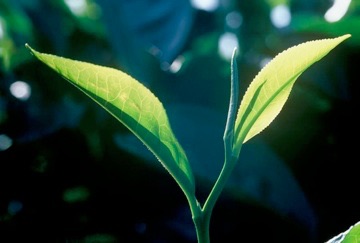A World of Tea (continued)
Introduction | Cultivating | Brewing and Drinking
Types of Tea | Cooking with Tea | Tea Recipes
Cultivating Tea

The best quality teas are still picked only by hand, as machines won’t distinguish between leaves ready for harvesting and those that are not. Hand-picking is a tedious job, but the finest green teas are obtained by gently plucking only the tender bud and two youngest leaves at the tip of the branches. The plant will offer its best flavor in the cool hours of twilight and dusk, and the first growth of spring is the year’s prime harvest. Tea connoisseurs seek the “first flush” for its finer flavor and will pay premium prices for this early harvest.
Once the tea leaves are picked, they must be immediately processed to prevent any loss in flavor.
Fermenting and Drying the Leaves
An important step called fermentation, in which oxidation alters the chemistry of the leaves, helps distinguish the major types of teas. Unfermented teas retain their bright green color and tannic brightness, while fermented teas darken and develop more complex flavors. Green teas are left unfermented, oolong teas are semi-fermented and black teas undergo full fermentation.

(Photo: Fairtrade Labeling International)
Other steps in processing tea include steaming, drying, withering, pounding, rolling, twisting or firing the leaves. Each action creates a specific flavor in teas by affecting the complex balance of enzymes, oxygen, moisture and heat in the leaves. Stir-frying, one of the most important steps, involves skillfully heating and stirring the leaves by hand in large woks. To make richly flavored Pu’er-type teas, workers heap tea leaves in damp mounds and allow them to undergo a special fermentation. Naturally occurring bacteria acts on the leaves, developing the earthy flavor of this famous tea.
Shaping the leaves is another crucial step. By carefully manipulating the leaves, experienced workers can create an endless variety of size and shape, including tight curls, loose twists, thin needles, or perfect pearls.
January 2008
© Thy Tran
